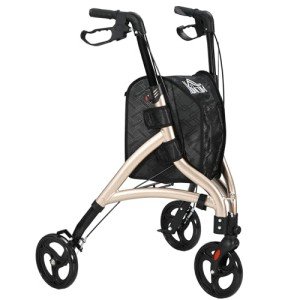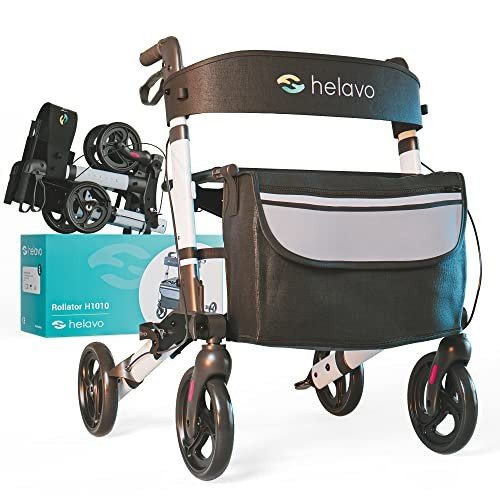18
mayoWhat Are The Reasons You Should Be Focusing On Improving Handicap Walker
Understanding Handicap Walkers: Types, Benefits, and Usage
Handicap walkers, also frequently understood as mobility walkers or just walkers, act as essential aids for people with mobility difficulties. These devices supply physical support and stability, allowing users to walk more confidently and individually. This article dives into the numerous types of handicap walkers, their benefits, and essential considerations when selecting one.
What is a Handicap Walker?
A handicap walker is a gadget created to assist people who have trouble walking due to age, health problem, or impairment. Walkers help users keep their balance, avoid falls, and recover mobility. Unlike canes, which supply very little assistance, handicap walkers normally use a more comprehensive base of stability, making them suitable for more significant mobility obstacles.
Kinds Of Handicap Walkers
Handicap walkers come in different styles, designed to fulfill the special requirements of users. Below is a breakdown of the most typical types:
| Type of Walker | Description | Suitable User |
|---|---|---|
| Standard Walker | A Lightweight 4-Wheel Mobility Walker with Seat frame that needs lifting to move. Generally has rubber pointers for traction. | Those who can raise the walker and have moderate balance concerns. |
| Wheeled Walker | Functions two wheels at the front, permitting much easier mobility without lifting. | Users who can keep stability and require more support while walking. |
| Ergonomic Rollator Walker | Similar to wheeled walkers however includes hand brakes and a seat for resting. | People requiring a portable resting choice with boosted mobility. |
| Bariatric Walker | Specifically developed for much heavier people, providing enhanced frames and larger hand grips. | Heavier users needing additional support and stability. |
| Child Walker | Customized models for children to aid in their development and mobility. | Children with developmental delays or mobility challenges. |
Benefits of Using a Handicap Walker
Many users discover that handicap walkers substantially enhance their lifestyle. Here are some benefits:
1. Increased Stability
Handicap walkers supply a sturdy support structure, which helps avoid falls and boosts users' self-confidence when walking around.
2. Boosted Mobility
Walkers make it easier for people with mobility restrictions to browse stairs, uneven surfaces, and other challenging environments.
3. Independence
Utilizing a walker enables individuals to perform day-to-day activities separately, whether it's walking around the home or going shopping.

4. Pain Relief
Walkers improve posture and distribute weight more evenly, possibly reducing pain in joints and muscles throughout movement.

5. Social Engagement
By helping with mobility, walkers permit users to participate more actively in social events, family events, and community activities, fostering a sense of belonging.
Essential Considerations When Choosing a Walker
Picking the right handicap walker is vital for ensuring safety and comfort. Below are essential aspects to consider:
User's Height: Walkers been available in different heights. It's vital to select one that permits the user to stand upright Rollator With Wheels a small bend in the elbows when keeping the manages.
Weight Capacity: Assess the weight capability of the walker, particularly for bariatric options, to guarantee it fits the user's needs.
Mobility: If the walker will be used regularly in numerous places, consider models that can be easily folded or transferred, such as rollators.
Features: Some walkers include additional features like cushioned seats, storage baskets, and Adjustable Walker handles. Evaluate which functions are most beneficial for the user.
User Preferences: The person's convenience and choices need to also play a significant role in the selection. Checking numerous models may help identify the very best fit.
How to Use a Handicap Walker Effectively
Using a handicap walker properly ensures safety and maximizes its benefits. Follow these steps for safe use:
- Adjust the Height: Make sure the walker is gotten used to the appropriate height for the user.
- Support the Walker: Place the walker in front while ensuring all four rubber suggestions or wheels are in contact with the ground.
- Use Proper Techniques: Move the walker forward about one step length, and after that enter the walker while keeping the weight balanced.
- Preserve Good Posture: Stand straight and utilize the walker for assistance, not leaning excessively on it.
- Practice Regularly: Encourage users to practice walking with the walker regularly, assisting to develop self-confidence and improve balance.
Frequently Asked Questions (FAQs)
1. What is the difference in between a standard walker and a rollator?
Requirement walkers need the user to raise them with each action, while rollators have wheels and allow the user to push them forward without lifting. Rollators also usually include brakes and might have a seat.
2. Are handicap walkers covered by insurance?
Coverage for handicap walkers can differ based on an individual's insurance plan. It is suggested to contact the company for particular details regarding coverage and any required documentation required.
3. Can kids use handicap walkers?
Yes, there are walkers created particularly for kids that accommodate their developmental requirements. It's important to select a model that is age-appropriate and provides the essential assistance.
4. How do I maintain my walker?
Routinely check the walker for wear and tear, including the grips and www.mymobilityscooters.uk wheels. Tidy the walker as needed and guarantee all parts are functioning correctly for safety.
5. When is it time to stop using a walker?
This varies by individual. Users should consult with their doctor to assess mobility improvements and discuss whether transitioning to a various mobility aid or moving without support is proper.
A handicap walker can be a transformative tool for people with mobility challenges, offering them greater stability, independence, and enhanced lifestyle. By understanding the various types, benefits, and key factors to consider in picking a walker, individuals can make informed choices that align with their special requirements and way of life. Whether for rehab, aging gracefully, or handling disabilities, handicap walkers play a vital role in promoting mobility and wellness.


Reviews